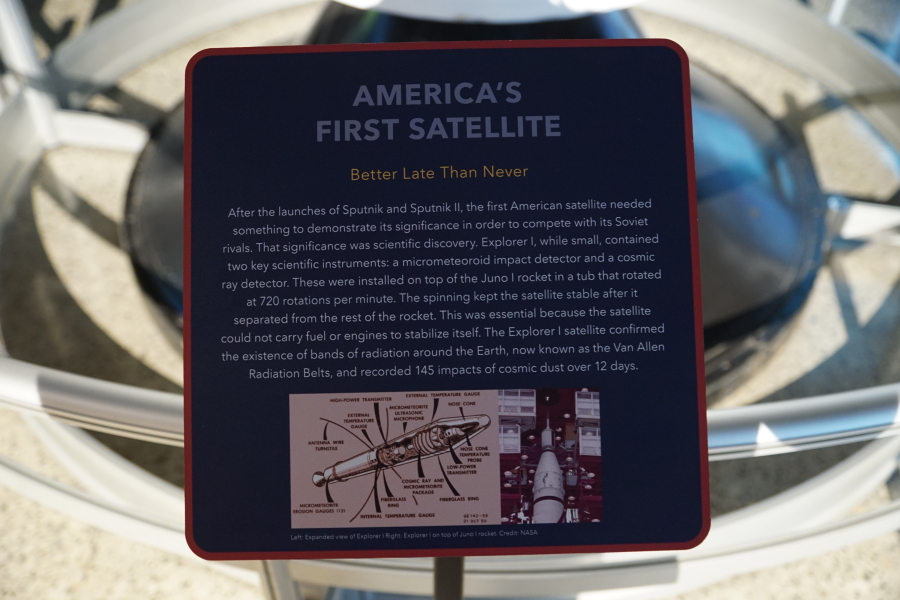| Prev |
heroicrelics.org Apollo: When We Went to the Moon Site Index Apollo: When We Went to the Moon Gallery |
Next |
dscd2980.jpg
The sign accompanying the Juno high-speed stages model.
It reads
America's First Satellite
Better Late Than Never
After the launches of Sputnik and Sputnik II, the first American satellite needed to demonstrate its significance in order to compete with its Soviet rivals. That significance was scientific discovery. Explorer I, while small, contained two key scientific instruments: A micrometeoroid impact detector and a cosmic ray detector. These were installed on top of the Juno I rocket in a tub that rotated at 720 rotations per minute. The spinning kept the satellite stable after it separated from the rest of the rocket. This was essential because the satellite could not carry fuel or engines to stabilize itself. The Explorer I satellite confirmed the existence of bands of radiation around the Earth, now known as the Van Allen Radiation Belts, and recorded 145 impacts of cosmic dust over 12 days.

| Time picture taken | Sat Jun 22 12:44:30 2019 |
| Location picture taken |
Apollo: When We Went to the Moon Exhibit Space Hall "Old" Museum U.S. Space & Rocket Center Huntsville, AL |
| Prev | Apollo: When We Went to the Moon Gallery | Next |